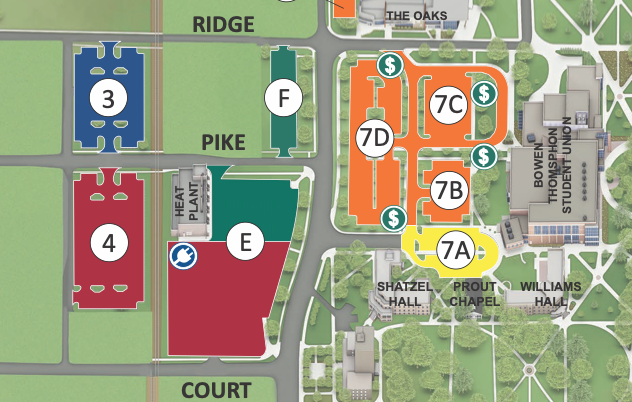After more than three collective hours of testimonies and discussion regarding a controversial rezoning ordinance of properties near downtown, city council decided to postpone it indefinitely.
The rezoning ordinance would change properties on North Prospect, East Wooster and North Summit streets from B-2 general commercial to B-3 central business zones.
The properties are currently owned by Wooster Street Apartments LLC, SAG Investments Ltd. and Robert L. Hudson.
Offices, motels, transportation terminals and bars are allowed under B-2, but is currently host to rental homes, offices and a parking lot. B-3 would allow for everything B-2 would allow but with the maximum of four stories to a building, according to Heather Saylor, city planning director.
The applicants who requested the zoning change, plan on demolishing four of the rental properties and putting up a two-story building accommodating eight business units on the first story and 16 efficiency rental units on the second, said Michelle Green, who represented Wooster Street Apartments, LLC.
Residents in the surrounding area, however, were wary of the proposal, vocalizing concerns about lower property values, problems with student renters and future construction.
“We have too many student rental units there already,” said Les Barber. “All of the houses [currently on the properties] are in good shape and are still attractive, but we all know that student housing in the long run is a form a urban blight.”
Rose Hess said creating more rental properties for students will only increase the litter and nuisance parties in the area.
Hess noted police had responded to nearly 20 nuisance calls to a particular house on North Prospect.
If retail stores are installed, there wouldn’t be any nuisance problems and the residents would have no problem with it, she said.
Some residents proposed that the proposed building be moved downtown.
“We have a number of vacant storefronts on Main Street; we are not in need of commercial space,” said Kathleen Dixon. “Strip malls are synonymous with urban blight.”
All community members who spoke were concerned with the possibility of later development turning the area into a four-story apartment.
Even though the rezoning would allow for a four-story building, Green said they would not stray from the original design and population density would actually decrease as a result.
Collectively, 21 total people could reside among the four properties. The proposed building would bring that down to 16, Green said.
It would also bring business into the area and increase income and real estate tax revenue, which would bring more money to the city and school district, she said.
Saylor justified the rezoning by noting the high traffic volume in the area would make for economic success and it is an ample spot seeing as its in close proximity to downtown.
She also linked it to the ongoing city and University visioning process, which one of its objectives is to improve and link the corridors between the two, which the rezoning would complement.
Dixon believes that the potential new housing in the area wouldn’t impact the corridor.
“There doesn’t seem to be a problem with students getting downtown over the 25 years I’ve been here,” Dixon said.
In an attempt to negotiate, members of council asked if the zones were changed and the proposed building did not go through, they would consider requesting to revert back to B-2.
Green said it was fair and they would if that situation occurred.
Ultimately, council decided to postpone the ordinance to look into a better alternative to appease both sides of the issue.
Fourth Ward Council Member Greg Robinette motioned to postpone the ordinance while council and the planning commission looked at possibilities of amending the B-3 zone to restrict four-story buildings.
If a change can be made to the code, Robinette said he would reintroduce the rezoning proposal and close the issue for good.














